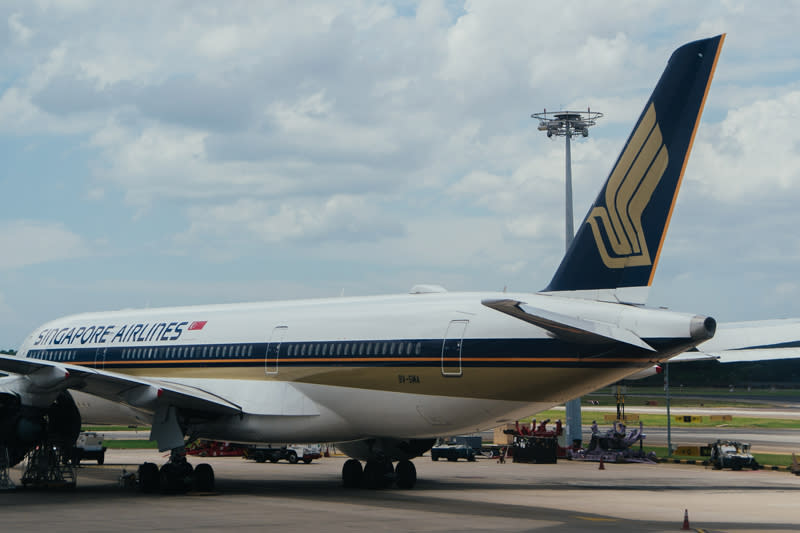Singapore Airlines’ Share Price Hits a 52-Week High: Can the Airline Soar Higher Next Year?

If you’ve just been back from a much-awaited holiday or are planning to fly off soon, you’re not alone.
With most economies fully reopened, many people have jumped at the opportunity to travel abroad after a two-year hiatus.
Singapore Airlines Limited (SGX: C6L), or SIA, is benefitting from this surge in air travel.
The total number of passengers it ferried hit a post-pandemic high of 2.4 million last month, up nearly eightfold year on year and significantly higher than the 85,200 registered almost two years ago in December 2020.
Meanwhile, the blue-chip airline had also reported a sparkling set of financial numbers for its fiscal 2023’s first half (1H2023) ending 30 September 2022.
SIA has even resumed paying out dividends, delighting income-seeking investors with S$0.10 per share worth of interim dividends.
The group’s share price has surged to a 52-week high in line with these good results, up 11.8% year to date to S$5.60.
With the airline coasting on a wave of optimism, can SIA’s share price continue to soar to new heights in 2023?
A temporary surge?
SIA’s passenger numbers look good because of a low base effect last year when travel had still not resumed in full.
At the time, the government had introduced vaccinated travel lanes that allowed a limited number of travellers to board flights based on a set of onerous conditions.
Investors should also note that the current surge in numbers may also be due, in part, to “revenge spending” where people have accumulated funds that they could not spend in the last two years.
There are hints that this may be the case.
Total billings on Singapore-issued credit and charge cards was around S$20.2 billion for the third quarter of 2022 (3Q2022), up from S$16 billion in 3Q2021.
This is impressive when you consider that 3Q2022’s spending is also 17% higher than the S$17 billion spent in 3Q2019 before the pandemic broke out.
On this note, it was reported that higher holiday costs were the reason behind the increased card use.
For context, the average ticket size for travel-related spending has increased by around 20% since 2019.
With the ticket size increase exceeding the increase in spending when compared with 2019, this means that volume was still lower than pre-pandemic levels.
Once the revenge spending effect wears off, SIA may experience a dip from the current surge in 2023.
Storm clouds are gathering
Even as the surge subsides, other storm clouds are gathering at a rapid clip.
High core inflation of 5.1% for October will undoubtedly dampen spending demand.
Private sector economists have forecast that core inflation will come in at 4% next year and incorporates the 1% increase in the GST rate which takes effect from 1 January.
Growth forecasts for Singapore’s gross domestic product (GDP) have also been cut, with economists projecting an expansion of 1.8% in 2023.
This forecast may be reduced further should risk from geopolitical tensions, supply chain disruptions, and war worsen next year.
There may even be a possibility that the economy may enter a recession, which would result in many people losing their jobs.
Coupled with surging interest rates as the US Federal Reserve aggressively raises its benchmark rate to combat inflation, it could set up a “perfect storm” of negatives that will severely curtail discretionary spending.
These headwinds could hit SIA as soon as early next year as the year-end travel season winds down.
(Some) wind beneath SIA’s wings
It’s not all doom and gloom, though.
A major market for SIA, China, has yet to fully reopen as it grapples with a surge in COVID-19 cases.
The country’s previous COVID-zero policy was loosened significantly last week, offering hope that the country will reopen its borders soon to allow its citizens to travel abroad.
However, experts say that the country’s death toll may surge in the coming weeks as China’s population lacks natural immunity and the elderly have low vaccination rates.
Once the Middle Kingdom has successfully fought off the COVID waves, its citizens can then take to the skies once again, providing a fillip for SIA.
That said, oil prices could stage a sharp rebound next year as higher demand comes from China, which worries about oversupply are now easing.
As fuel makes up close to 38% of SIA’s cost structure for 1H2023, a sustained rise in oil prices could dent its financial results and reduce the amount of cash flow the group generates.
Get Smart: Turbulence ahead
SIA is currently riding high on several tailwinds, but these could prove temporary for the carrier.
There may be turbulence ahead as the airline grapples with several headwinds that are set to become more prominent in 2023.
It looks like the group may face a tough road ahead for its business and share price.
How do you decide if a growth stock is worth your money? There is no shortage of stock ideas today, but is a particular stock suitable for you? Find out more in our latest FREE report, How To Find The Best US Growth Stocks For Your Portfolio. Click HERE to download the report for free now!
Follow us on Facebook and Telegram for the latest investing news and analyses!
Disclaimer: Royston Yang does not own shares in any of the companies mentioned.
The post Singapore Airlines’ Share Price Hits a 52-Week High: Can the Airline Soar Higher Next Year? appeared first on The Smart Investor.

 Yahoo Finance
Yahoo Finance 